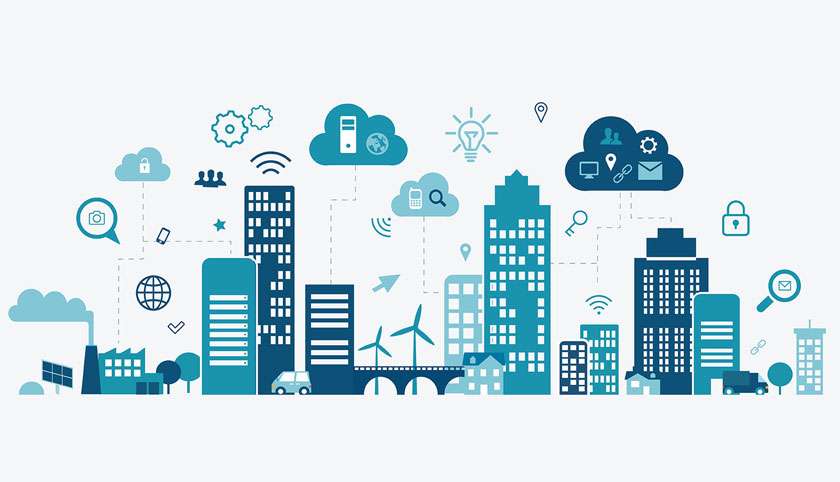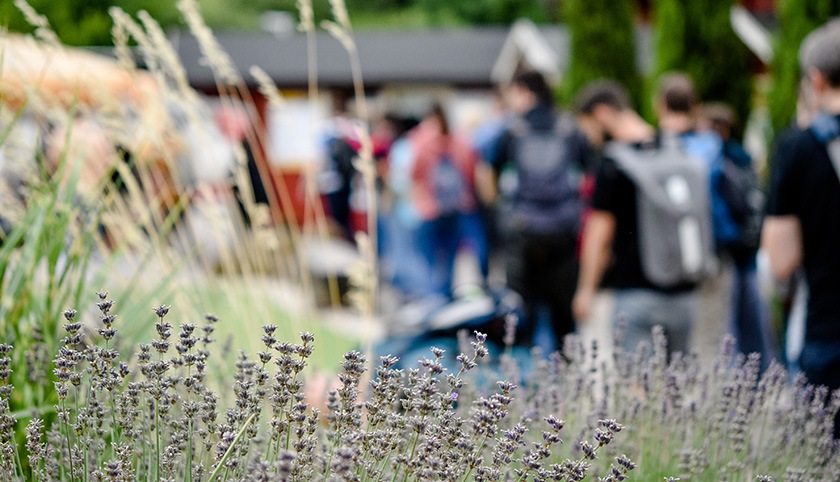What people expect from life in urban areas is subject to constant change. The development of smart neighbourhoods plays a crucial role in meeting these changing needs. The challenge here is to combine the old with the new. The familiar urban neighbourhood in which citizens feel comfortable and at home is linked to the new digital opportunities presented by the smart city. This demanding task can only be mastered together and in lively exchange between society, science and business.
The vision of an intelligently interlinked city
We live in exciting times! Anyone who thinks that our lives are already quite comfortable and that there is hardly any room for improvement has not yet considered the vision of an intelligently interlinked city. In a smart city, decentralised energy generation plants, energy storage units, electric vehicles, charging stations and public services are digitally linked with each other. The convergence of life and work in a service society, new mobility requirements, and growing demands in regard to climate change pose major challenges for municipalities, energy suppliers, and the private sector.
It is true that the intelligent handling and awareness of the use of big data for smart urban development must first be learned and tested. It is true, however, that courageous steps are necessary to fill this vision with life and to adapt the city to the changing needs of the public. On a smaller scale, development and implementation of smart neighbourhoods plays a key role in this context.
When is an urban neighbourhood a smart neighbourhood?
A smart neighbourhood is a spatially continuous area in which all energy processes are considered as a whole, making it possible for the residents to be offered value-added services on this basis. This includes electricity, heat, mobility, security, telecommunications and information services. Explicit and intensive integration of residents in terms of information and influence is a key component, with data data being imported, integrated, processed and reused.

(Image source: Zachary Staines – unsplash.com)
In the neighbourhood, proximity enables social interaction and joint organisation of various activities that often take place today using digital communication in everyday life. In a smart neighbourhood, it is important to use technological developments and to look for meaningful solutions for fostering liveability in the neighbourhood. The focus should be on the needs and integration of all residents, whether they are senior citizens, families or single parents.
According to German energy agency dena, appropriately planned residential districts are capable of tapping into considerable potential for efficiency in a variety of different sectors – such as mobility, comfortable residential life, communal life of the young and old, energy supply, waste management and environmental protection. For example, the effort and costs for barrier-free living can be reduced if such accommodations are implemented in an entire neighbourhood. It is also more energy-efficient to install a local heating solution for many residential units instead of many individual heating systems. And an interconnected infrastructure of electric vehicles, parking and charging stations, home energy storage and private power generation conserves energy and resources, improves people’s lives in their neighbourhoods and makes a vital contribution to the energy transition.
Possible goals of a neighbourhood concept:
- Energy conservation renovation of existing buildings
- Efficient supply of heat (through decentralised local energy generation and district heating)
- Use of roofs to host photovoltaic systems for “tenant power”, that is, direct use of the electricity in the residents’ homes
- Establishment of smart digital energy management to optimise systems in such a way that significant cost benefits are achieved while maintaining comfort
- Creation of an energy-efficient infrastructure
- Development of solutions for the use of renewable energy
- Climate-friendly mobility concept: providing a universal charging infrastructure for electric mobility, including car sharing in the residential area
- Parking space management: reporting systems for free parking spaces on the street to avoid having traffic circling the block looking for a place to park
- Climate-conscious consumption behaviour
The neighbourhood as a living laboratory
“Smart neighbourhoods” not only are great for residents, the environment and local businesses but also bolster the local innovation ecosystem. In recent years, cities like Eindhoven and Manchester have impressively demonstrated how a neighbourhood can serve as a living laboratory for local start-ups and SMEs by allowing them to test and demonstrate their innovations.
Smart Energy Karlsruhe – supported by Seven2one from the very beginning
Karlsruhe has also set for itself ambitious goals in terms of environmental protection as well as energy and resource efficiency. These goals are to be achieved through systematic improvements in energy efficiency in industrial, commercial and municipal real estate. As a building block of TRK’s recently adopted energy strategy, Seven2one is developing energy self-sufficient neighbourhoods of the future together with partners in order to create liveable environments for future generations.




0 Comments